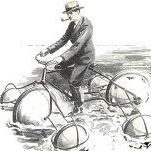-
Posts
11,263 -
Joined
-
Last visited
-
Days Won
68
Content Type
Profiles
Forums
Events
Gallery
Blogs
Store
Everything posted by TheBiscuits
-
This post cannot be displayed because it is in a forum which requires at least 10 posts to view.
-
This post cannot be displayed because it is in a forum which requires at least 10 posts to view.





